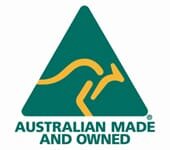 What’s that smell? It’s early morning and you arrive at your workplace. It could be a factory or an industrial site. It could be a commercial kitchen or even an aircraft hangar or a veterinary clinic. It’s a working site where large scale undertakings occur regularly and where benches and sinks are regularly wiped down to minimize soil, dirt, the accumulation of waste product.
What’s that smell? It’s early morning and you arrive at your workplace. It could be a factory or an industrial site. It could be a commercial kitchen or even an aircraft hangar or a veterinary clinic. It’s a working site where large scale undertakings occur regularly and where benches and sinks are regularly wiped down to minimize soil, dirt, the accumulation of waste product.
Boy oh Boy! And this morning, that smell is bad….in fact it’s downright “on the nose!”
The sludge in the drains has built up again and it’s your job to maintain a high standard of health and cleanliness. So…what can you do?
Extreme Green Waste and Odour Treatment is the solution to the problem. It’s a waste and odour treatment that is kind to the environment because it is a “non-toxic and stable fermentation based product that contains special bio-degradable and environmentally responsible surfactants that utilize naturally occurring compounds. These compounds actually stimulate microbiological activity that clears odour and sludge in septic systems, long drop toilets grease traps, sinks and drains and even holding ponds, freshening your environment and ridding it of unpleasant smells and odours.”[1]
It’s not only highly effective but also environmentally sound. It won’t hurt our waterways and it won’t damage our landscape. And, when used as directed it has the potential to revitalize the system as it destroys and eliminates the unpleasant smells.
Extreme Green Waste and Odour Treatment can be used in animal areas and veterinary facilities, in food preparation areas and even in abattoirs and chicken and fish processing plants where massive amounts of animal fats and by-product accumulate and need treatment in accompanying holding ponds.
It can also be used in garbage and refuse areas and can be sprayed into garbage disposal units and vehicles to cut down on odour, and has an almost indefinite shelf life when it is stored correctly.*
Whether your industry or concern is large scale or small, Envirosafe Extreme Green Waste and Odour Treatment is available in a packaging size to suit your needs. Whether it is 4 litres or 10 litres, 205 litres or 1,000 litres, Envirosafe Solutions supplies you with quantities that are tailored to your requirements and to your storage areas.
What’s more, Envirosafe’s Extreme Green Waste and Odour Treatment can even be diluted down to a ratio of 1:100 with water for general purpose cleaning and at a 1:25 ratio for heavy duty cleaning. There’s no need to double up or triple up on a whole storage facility of single use products. Extreme Green Waste and Odour Treatment does it all. Non-toxic, kind to our delicate environment, safe and bio-degradable and containing only naturally occurring ingredients, Extreme Green Waste and Odour Treatment is the perfect solution to distinct and difficult odours in your workplace.
Call Envirosafe Solutions now to order, on 1300 88 90 70.
*Store in a cool, dry, well ventilated location away from direct sunlight.
[1] http://www.envirosafesolutions.com.au/productinnerpage.php?cat-21&product=21

































